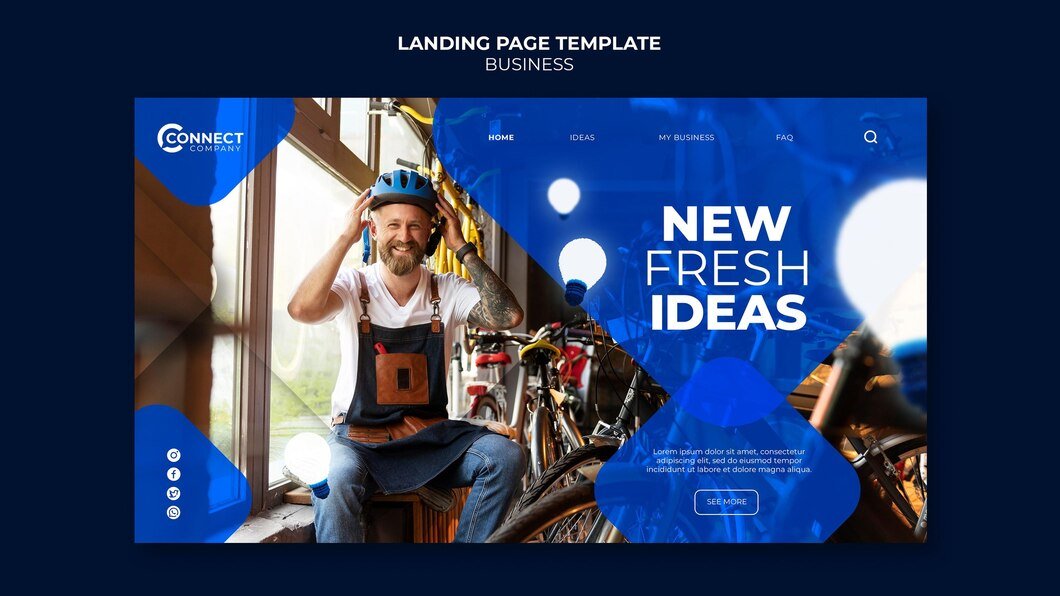In the dynamic landscape of online commerce, the success of an ecommerce website hinges significantly on its features and functionalities. As businesses increasingly pivot towards digital platforms to reach global markets, the importance of a well-designed and user-friendly ecommerce website cannot be overstated. This article explores the ten essential features that are crucial for creating a successful ecommerce website, ensuring seamless user experience, robust security, and enhanced business growth.
1. Mobile Compatibility
In an era dominated by smartphones, ensuring mobile compatibility is paramount. A responsive design that adapts seamlessly to various screen sizes and devices enhances accessibility and user engagement. Mobile-friendly websites not only cater to a broader audience but also improve search engine rankings, as mobile-friendliness is a key factor in Google’s algorithm.
2. User-friendly Navigation
Intuitive navigation is crucial for guiding users through the ecommerce journey effortlessly. Clear categorization, prominent search functionality, and strategically placed call-to-action buttons simplify the browsing experience and help users find products quickly. Streamlined navigation reduces bounce rates and encourages higher conversion rates by facilitating seamless exploration and purchase.
3. Secure Payment Gateways
Security is non-negotiable when it comes to ecommerce. Integrating reliable payment gateways that support major credit/debit cards, digital wallets, and other payment methods instills trust and confidence among customers. SSL certification, encryption protocols, and adherence to PCI DSS standards are essential to safeguard sensitive financial information and protect against cyber threats.
4. Comprehensive Product Search and Filtering Options
Efficient product search and filtering capabilities enhance usability by allowing customers to refine their search based on specific criteria such as price range, brand, size, and color. Implementing autocomplete suggestions, predictive search features, and advanced filtering options empowers users to find relevant products swiftly, improving overall satisfaction and encouraging repeat visits.
5. High-Quality Product Imagery and Descriptions
Visual appeal plays a pivotal role in ecommerce. High-resolution images from multiple angles, zoom functionality, and informative product descriptions that highlight key features and benefits help customers make informed purchasing decisions. Compelling visuals and detailed descriptions create a virtual shopping experience that mimics the tactile feel of physical retail, fostering consumer trust and loyalty.
6. Customer Reviews and Ratings
Social proof significantly influences purchasing decisions in ecommerce. Integrating customer reviews and ratings provides valuable insights into product quality, reliability, and customer satisfaction. Authentic feedback from previous buyers builds credibility and reassures prospective customers, fostering a sense of community and transparency within the ecommerce ecosystem.
7. Seamless Checkout Process
A streamlined checkout process is essential for reducing cart abandonment rates and maximizing conversions. Implementing a guest checkout option, progress indicators, multiple payment methods, and transparent shipping costs and policies simplify the purchasing process. Additionally, offering saved payment details and personalized recommendations during checkout enhances convenience and encourages repeat purchases.
8. Integration with Social Media and Customer Engagement Tools
Harnessing the power of social media for ecommerce amplifies brand visibility and drives traffic to your website. Integration with social media platforms enables seamless sharing of products, promotions, and customer experiences, facilitating direct interaction with a broader audience. Moreover, implementing live chat support, email newsletters, and personalized notifications enhances customer engagement and fosters long-term relationships.
9. Robust Analytics and Reporting
Data-driven insights are indispensable for optimizing ecommerce performance and making informed business decisions. Integrating robust analytics tools enables real-time tracking of key metrics such as traffic sources, conversion rates, customer behavior, and sales trends. Comprehensive reporting capabilities provide actionable insights that help identify opportunities for growth, refine marketing strategies, and enhance overall website performance.
10. Scalability and Flexibility
As your business expands, scalability and flexibility become critical factors for accommodating growth and evolving customer needs. Choosing an ecommerce platform that supports scalability, customization, and integration with third-party applications ensures adaptability to market changes and technological advancements. Scalable infrastructure and agile development methodologies empower businesses to innovate continuously and stay ahead of competitors in the competitive ecommerce landscape.
Conclusion
In conclusion, the success of an ecommerce website hinges on its ability to deliver a seamless, secure, and engaging shopping experience. By prioritizing the ten essential features outlined in this article—ranging from mobile compatibility and user-friendly navigation to secure payment gateways and robust analytics—businesses can create a competitive advantage, attract loyal customers, and drive sustainable growth in the digital marketplace. Embracing these features not only enhances user satisfaction and conversion rates but also positions ecommerce enterprises for long-term success in an increasingly interconnected global economy.













